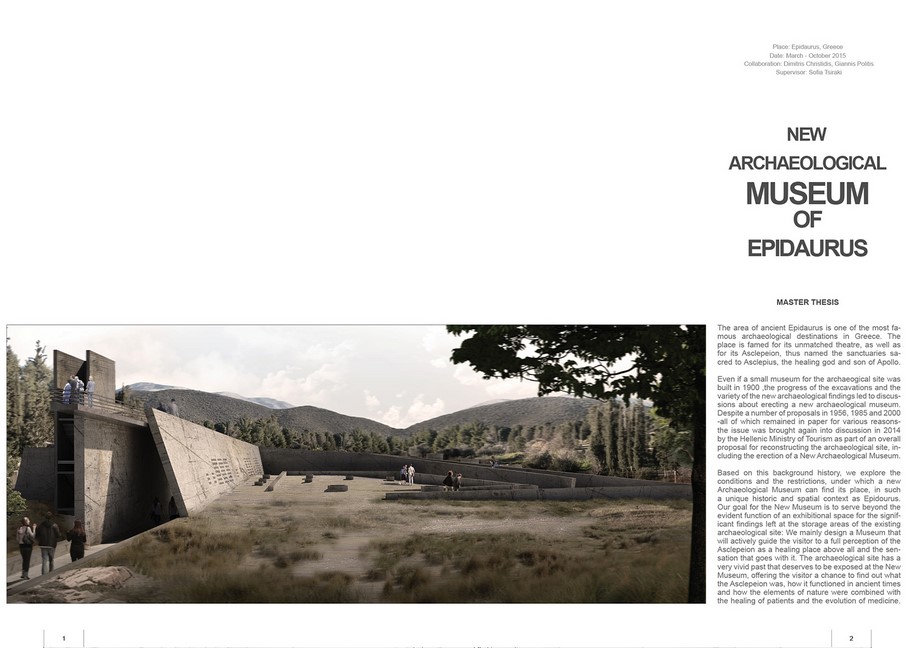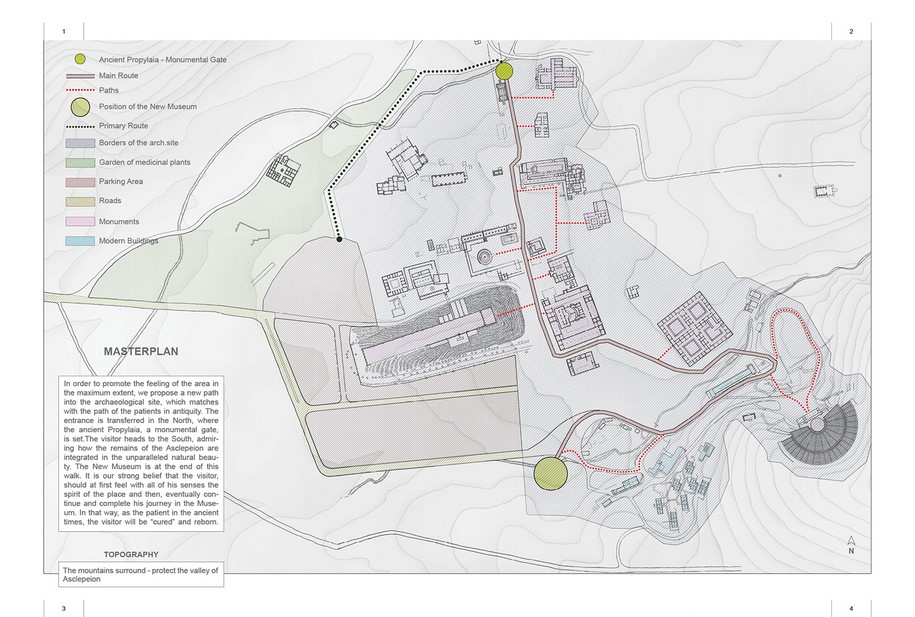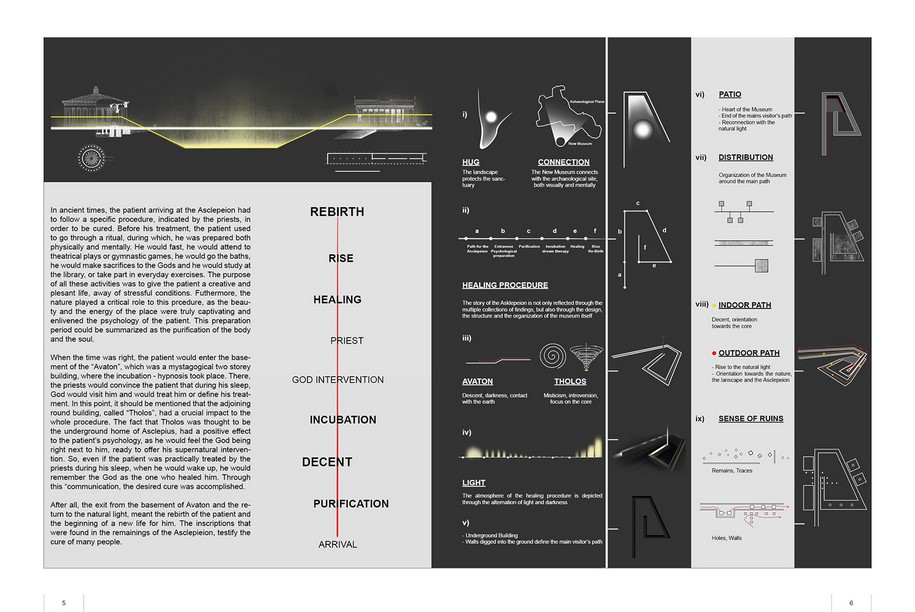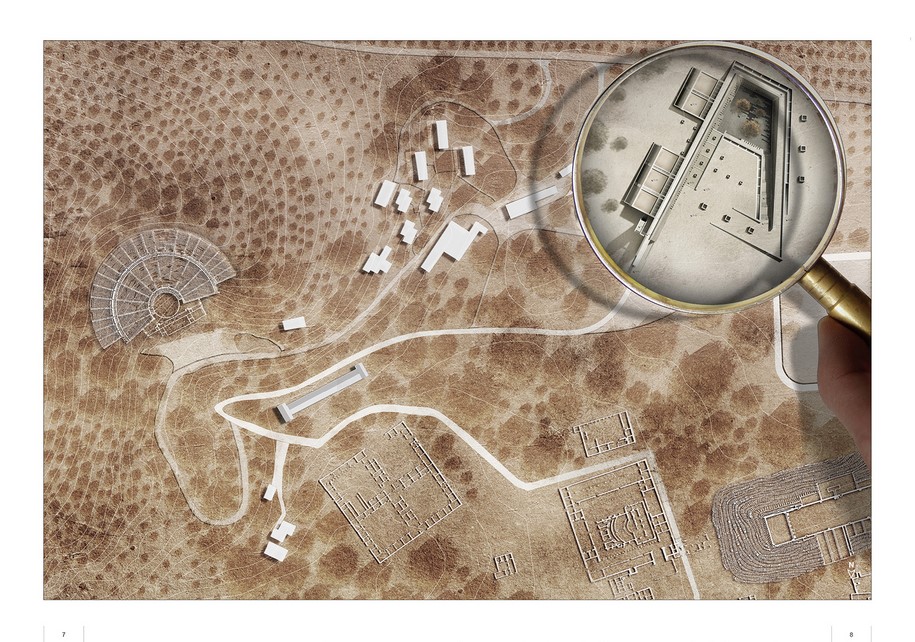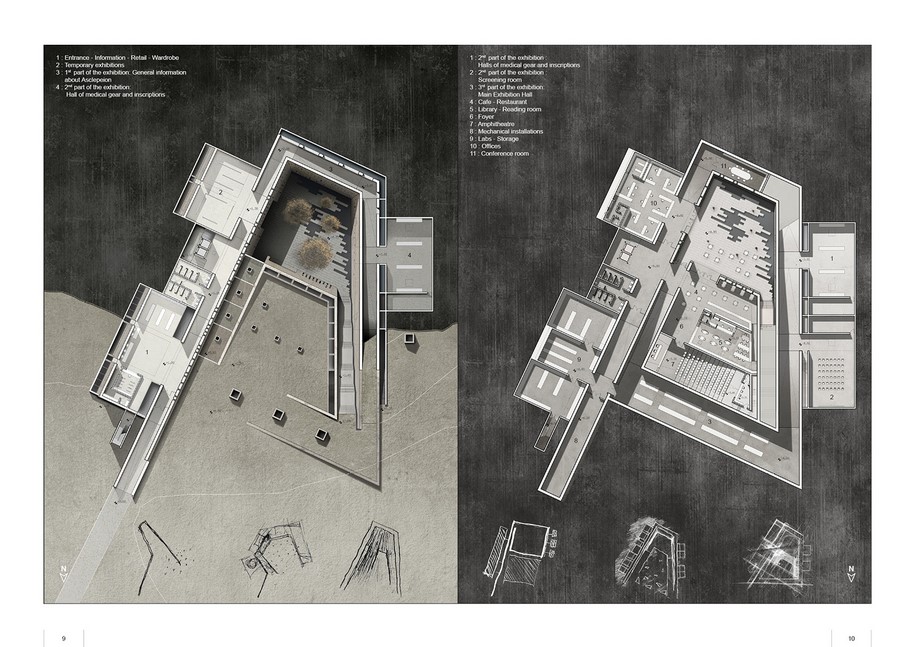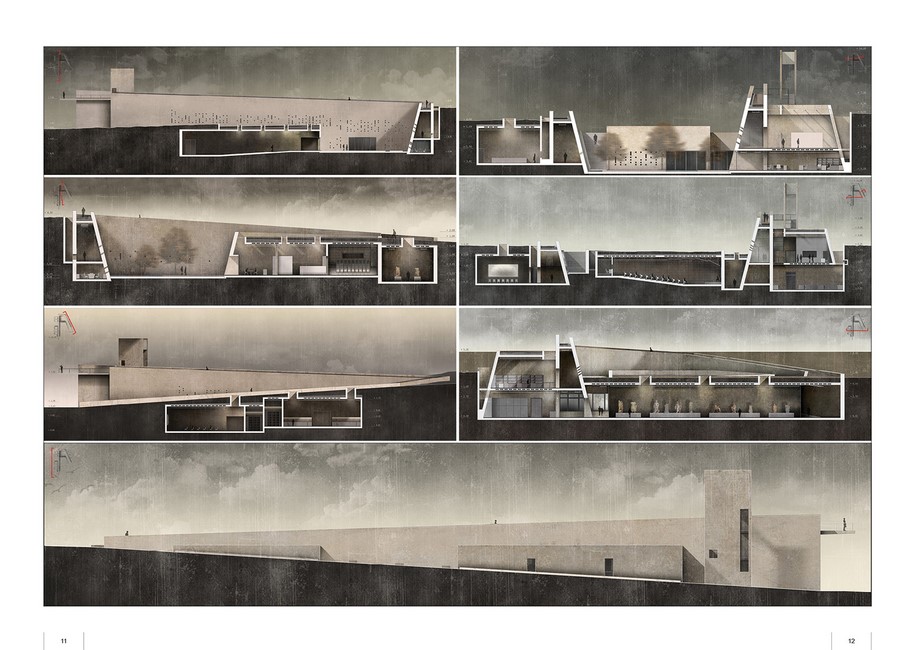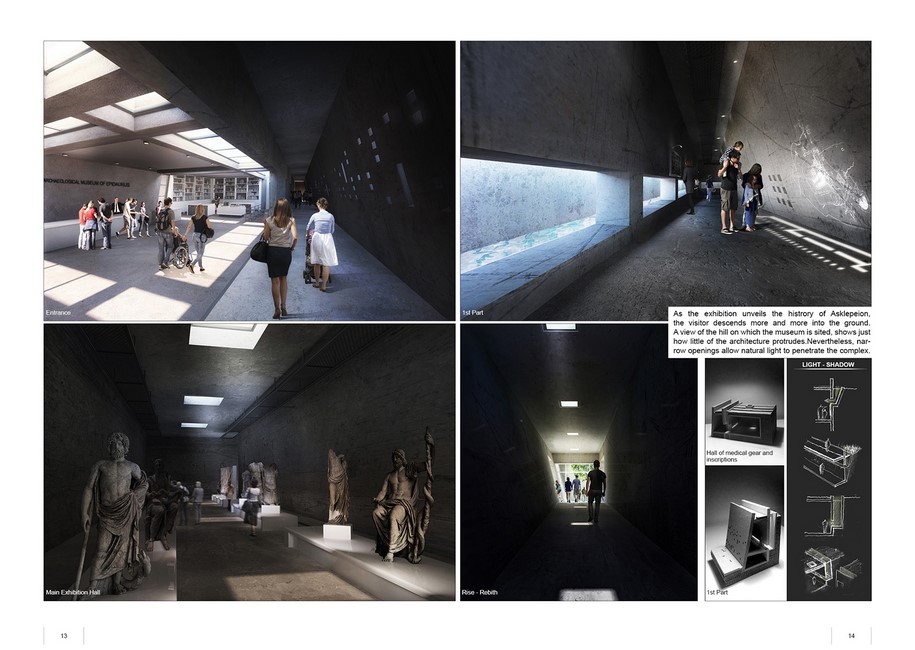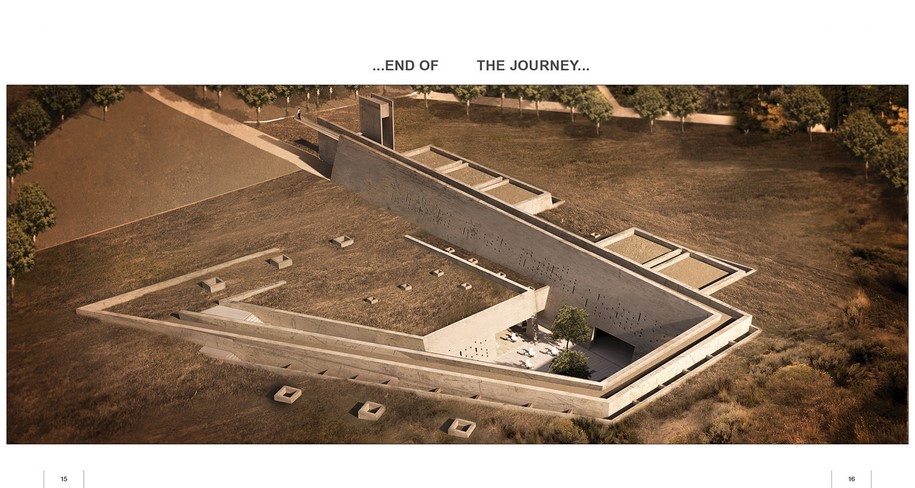The diploma thesis of Dimitris Galetakis, Dimitris Christidis and Giannis Politis entitled “New archaeological museum of Epidaurus” was presented in October 2015 at the School of Architecture of NTUA and was supervised by Professor Sofia Tsiraki. -text by the author
The area of ancient Epidaurus is one of the most famous archaeological destinations in Greece. The place is famed for its unmatched theatre, as well as for its Asklepion, thus named the sanctuaries sacred to Asclepius, the healing god and son of Apollo.
Even if a small museum for the archeological site was built in 1900, the progress of the excavations and the variety of the new archaeological findings led to discussions about erecting a new archaeological museum. Despite a number of proposals in 1956, 1985 and 2000 -all of which remained in paper for various reasons- the issue was brought again into discussion in 2014 by the Hellenic Ministry of Tourism as part of an overall proposal for reconstructing the archaeological site, including the erection of a New Archaeological Museum.
Based on this background history, we explore the conditions and the restrictions, under which a new Archaeological Museum can find its place, in such a unique historic and spatial context as Epidaurus.
Our goal for the New Museum is to serve beyond the evident function of an exhibitional space for the significant findings left at the storage areas of the existing archaeological site: We mainly design a Museum that will actively guide the visitor to a full perception of the Asklepion as a healing place above all and the sensation that goes with it. The archaeological site has a very vivid past that deserves to be exposed at the New Museum, offering the visitor a chance to find out what the Asklepion was, how it functioned in ancient times and how the elements of nature were combined with the healing of patients and the evolution of medicine.
MASTERPLAN
In order to promote the feeling of the area in the maximum extent, we propose a new path into the archaeological site, which matches with the path of the patients in antiquity. The entrance is transferred in the North, where the ancient Propylaia, a monumental gate, is set. The visitor heads to the South, admiring how the remains of the Asklepion are integrated in the unparalleled natural beauty.
The New Museum is at the end of this walk. It is our strong belief that the visitor, should at first feel with all of his senses the spirit of the place and then, eventually continue and complete his journey in the Museum. In that way, as the patient in the ancient times, the visitor will be “cured” and reborn.
TOPOGRAPHY
The mountains surround – protect the valley of Asklepion. In ancient times, the patient arriving at the Asklepion had to follow a specific procedure, indicated by the priests, in order to be cured. Before his treatment, the patient used to go through a ritual, during which, he was prepared both physically and mentally. He would fast, he would attend to theatrical plays or gymnastic games, he would go the baths, he would make sacrifices to the Gods and he would study at the library, or take part in everyday exercises.
The purpose of all these activities was to give the patient a creative and pleasant life, away of stressful conditions. Furthermore, the nature played a critical role to this procedure, as the beauty and the energy of the place were truly captivating and enlivened the psychology of the patient. This preparation period could be summarized as the purification of the body and the soul.
When the time was right, the patient would enter the basement of the “Avaton”, which was a mystagogical two storey building, where the incubation – hypnosis took place. There, the priests would convince the patient that during his sleep, God would visit him and would treat him or define his treatment. In this point, it should be mentioned that the adjoining round building, called “Tholos”, had a crucial impact to the whole procedure. The fact that Tholos was thought to be the underground home of Asclepius, had a positive effect to the patient’s psychology, as he would feel the God being right next to him, ready to offer his supernatural intervention. So, even if the patient was practically treated by the priests during his sleep, when he would wake up, he would remember the God as the one who healed him. Through this “communication, the desired cure was accomplished.
After all, the exit from the basement of Avaton and the return to the natural light, meant the rebirth of the patient and the beginning of a new life for him. The inscriptions that were found in the remaining’s of the Asklepion, testify the cure of many people.
As the exhibition unveils the history of Asklepion, the visitor descends more and more into the ground.
A view of the hill on which the museum is sited, shows just how little of the architecture protrudes. Nevertheless, narrow openings allow natural light to penetrate the complex.
Facts & Credits
Project title New archaeological museum of Epidaurus
Course Diploma Thesis
Date October 2015
Team Dimitris Galetakis, Dimitris Christidis, Giannis Politis
Supervisor Sofia Tsiraki
___________________________________________________
browse through student projects on Archisearch here!
–
δείτε περισσότερες εργασίες φοιτητών εδώ!
READ ALSO: REACTIVATIONS : an amphibious installation in Eleysis gulf | Thesis by Heidi Kaproulia
